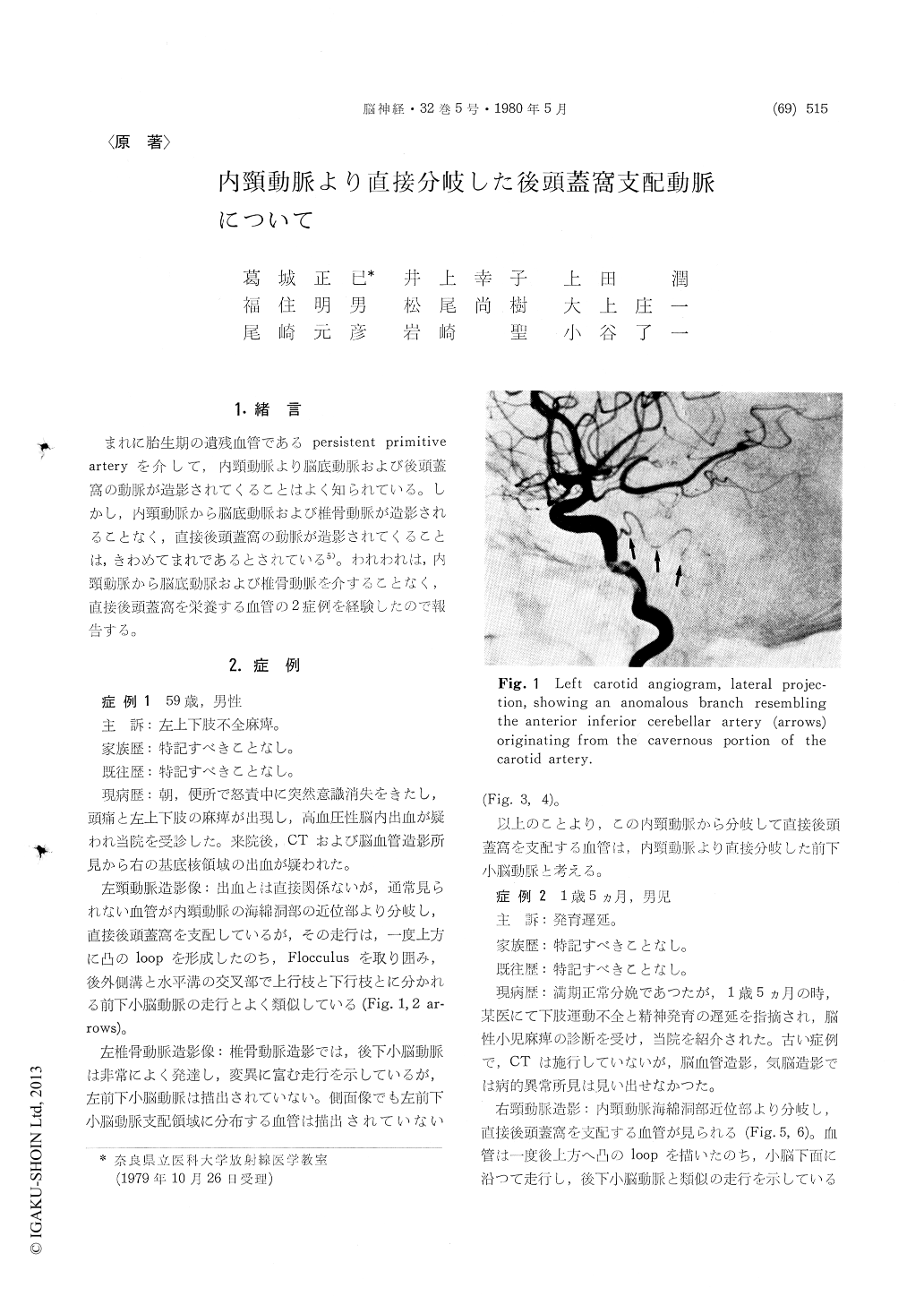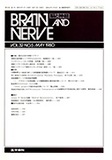Japanese
English
- 有料閲覧
- Abstract 文献概要
- 1ページ目 Look Inside
1.緒言
まれに胎生期の遺残血管であるpersistent primitivearteryを介して,内頸動脈より脳底動脈および後頭蓋窩の動脈が造影されてくることはよく知られている。しかし,内頸動脈から脳底動脈および椎骨動脈が造影されることなく,直接後頭蓋窩の動脈が造影されてくることは,きわめてまれであるとされている5)。われわれは,内頸動脈から脳底動脈および椎骨動脈を介することなく,直接後頭蓋窩を栄養する血管の2症例を経験したので報告する。
An anomalous branch of the cavernous internal carotid artery is very rarely demonstrated angio-graphically. Its branch, originating at the level where the trigeminal artery is usually found but having no communication with the basilar artery, supplys vessels of the posterior fossa directly. Its distribution approximated that of the anterior inferior cerebellar artery and the posterior inferior cerebellar artery. By now seven cases of the anomalous anterior inferior cerebellar artery have been reported by Scotti, Tomsick and Itou. Four cases of the anomalous inferior cerebellar artery have been reported by Haughton. And several cases of the anomalous posterior inferior cerebellar artery have been reported by Teal, Dillenge and Chamber. We report two cases of the anomalous inferior cerebellar artery.
One patient is male, 59 years old, having visited the hospital with a complaint of"paralysis of the left upper and the lower extremities", and was suspected the hypertensive cerebral hemorrhage clinically. This report demonstrates the anterior inferior cerebellar artery arising from the internal cerebral artery directly.
The other patient is male, one and a half years old, having visited the hospital with a complaint of"a delay of development", and was suspected a cerebral palsy. This report demonstrates the posterior inferior cerebellar artery arising from the internal cerebral artery directly.
Two cases show the branch of the internal carotid artery supply to the distribution of the anterior inferior cerevellar artery and the posterior inferior cerebellar artery through a persistent trigeminal trunk. Its branch has no communicating with the basilar artery. And an embryological explanation of the vessels is given, that is to say, it indicates a normal and an anomalous basilar development, and a persistence of the trigeminal artery with an imcomplete fusion of the longitudinal neural arteries, an explanation of the trigeminal artery is given, too. Neither the primitive trigeminal artery nor the paired longitudinal neural arteries normally persist in adults, but the frequency of angiographic demonstration of the carotid-basilar anastomosis of the persistent trigeminal artery type is 0.1% to0.2%. But our cases are not a fusion of the longitudinal neural arteries, a type of the anomalous inferior cerebellar artery.
We investigate the lateral projection of vessels angiographically, the course of arteries just after its origin from the cavernous internal carotid artery and its distal distribution.
In most of the cases having been reported by now it is seen that the proximal portion of the cavernous internal carotid artery is the origin of the vessels. And also the origin in our cases is the proximal portion of the cavernous internal carotid artery by Itou, or the precavernous portionby Dillenge, or C4, C4-05 by Fischer, and similar to the level where the trigeminal artery is usually found.
We consider the tortuosity of the course of arteries just arter the origin is simple variation of vessels, not the indication of abnormal course anatomically.
We reported an anomalous branch of the cavernous internal carotid artery, supplying vessels of posterior fossa directly, having no communi-cation with the basilar and the vertebral artery.

Copyright © 1980, Igaku-Shoin Ltd. All rights reserved.


